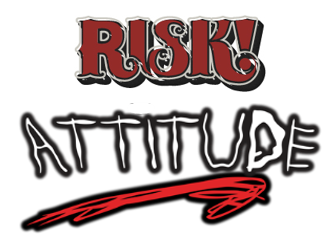Dr. David Hillson
 It seems obvious to say that people are essential if risk is to be managed effectively. Risk management is not done by robots or machines, but by people, acting individually and in groups. One of the biggest influences over the risk process are the risk attitudes which people adopt. These affect every aspect of the risk process, even if people are unaware of it. Understanding and managing these risk attitudes would significantly increase risk management effectiveness – so what are they and what affects them?
It seems obvious to say that people are essential if risk is to be managed effectively. Risk management is not done by robots or machines, but by people, acting individually and in groups. One of the biggest influences over the risk process are the risk attitudes which people adopt. These affect every aspect of the risk process, even if people are unaware of it. Understanding and managing these risk attitudes would significantly increase risk management effectiveness – so what are they and what affects them?
One simple definition of risk is “uncertainty that matters”, and it is only possible to define a risk in relation to something specific, usually an objective of some kind. A person’s view of risk is also affected by their perception of such things as the likelihood of the risk occurring or the impact if it were to happen. Similarly 'attitude' is “a chosen response to a given situation”, and it too is related to a specific situation and affected by perception. Combining the two definitions of risk and attitude allows us to build a working definition of 'risk attitude': “a chosen response to uncertainty that matters, influenced by perception”.
If we want to understand risk attitudes we need to be clear about the role of perception in shaping them. Recent research has uncovered three major types of influence on the perception of risk, known as the 'triple strand'. This is made up of conscious factors, subconscious factors, and affective factors. While the three parts of the triple strand overlap and interact in complex ways, it is helpful to tease out each of the three elements so that they can be examined and understood.
Strand 1 – Conscious factors: These are the visible and measurable characteristics of a particular risky situation, based on our rational assessment. We also take account of situational factors such as whether we have done anything similar before (familiarity), the degree to which we have control of the situation (manageability), or how soon the situation is expected to affect us (proximity).
Strand 2 – Subconscious factors: These include heuristics and other sources of cognitive bias. Heuristics are mental short-cuts based on our previous experience. Some heuristics help us to reach an appropriate position quickly, while others can be misleading. Unfortunately because heuristics are subconscious, their influence is often hidden, and they can be a significant source of bias. Common heuristics include memory of significant events (availability), or the conviction that we already know the right answer (confirmation trap).
Strand 3 – Affective factors: These are gut-level visceral feelings and emotions which tend to rise up automatically or instinctively in a situation and influence how we react. Fear, excitement or attraction can lead us to adopt risk attitudes which a more rational assessment might not consider.
The triple strand of influences interact together to affect perception in two important ways: how people perceive a particular risky situation, and what they perceive as the right way to respond to it. By appreciating how the triple strand factors drive our perception of risky situations, we will understand better why we adopt different risk attitudes. This will help us to manage our attitudes to risk proactively so that we make good decisions, select appropriate responses, and improve our management of risk.
- © David Hillson
- www.risk-doctor.com





